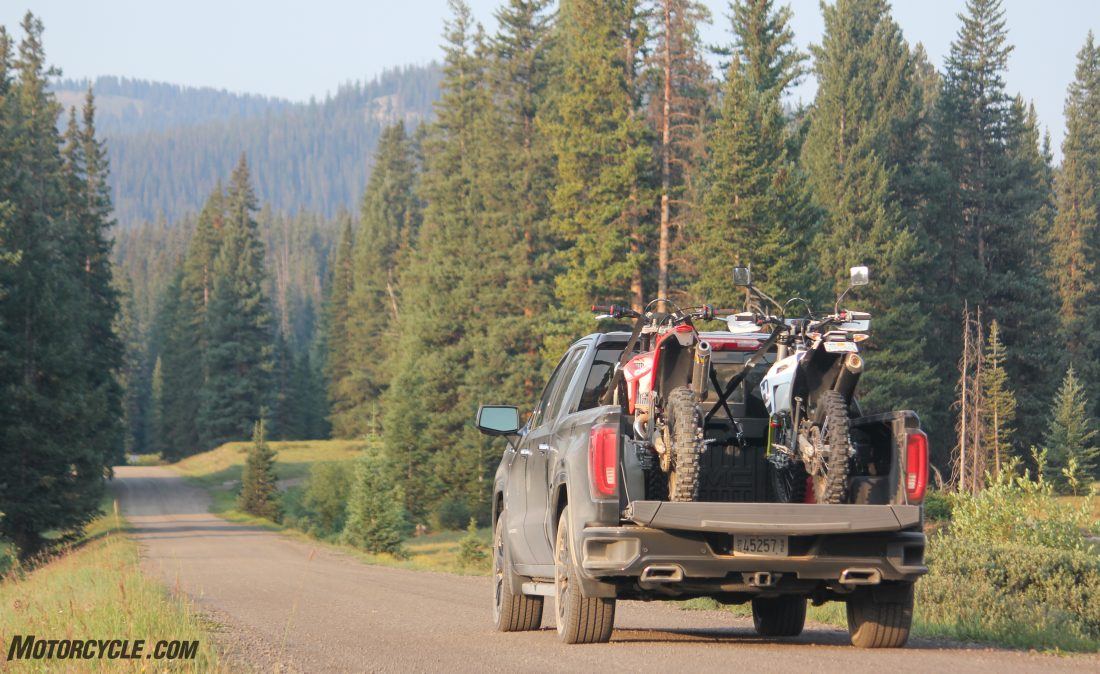
Four years ago, I bought my first real dirtbike (the 1978 Suzuki TS185 my friends and I passed around as kids didn’t count). It was a 2009 Kawasaki KX250F modified for desert trail riding. Foolishly, I bought that bike before I had a way to transport it to the desert that it had been modified for, or anywhere else really. At that point, I hadn’t owned a truck or any other four-wheeled vehicle for nine years. As numerous motorcycles made their way in and out of the garage over that time, I hadn’t felt the need or interest to own anything more than a few streetbikes thanks to southern California’s year-round riding season.
Of course, considering my new purchase came with a red sticker instead of a license plate, it wouldn’t take long to realize that relying on others to come get me and my bike to go riding simply wasn’t a viable solution. Not long after, I bought a four-wheel-drive 1998 Ford Ranger from a co-worker. It had plenty of miles on it, but still ran like a top. Just so happens that truck was one year newer than the Chevy S-10 I bought when I was 16. Movin’ on up!
Diagonally, I could fit a single bike in its bed with the tailgate closed. To make hauling two bikes easier, I mounted a single eye-hook in the bottom of the truck bed near the cab. It was simple, and it worked. The only reason I bought the truck was for hauling bikes anyway. Sure, there are plenty of aftermarket bike bars, and chocks out there to help secure motorcycles in a truck bed, but until now, I had never heard of a truck whose bed had been specifically designed, at the manufacturer level, to make hauling motorcycles easier. The GMC CarbonPro carbon fiber composite truck bed is just that. When equipped with the MultiPro tailgate, it makes loading, hauling, and unloading bikes a breeze.
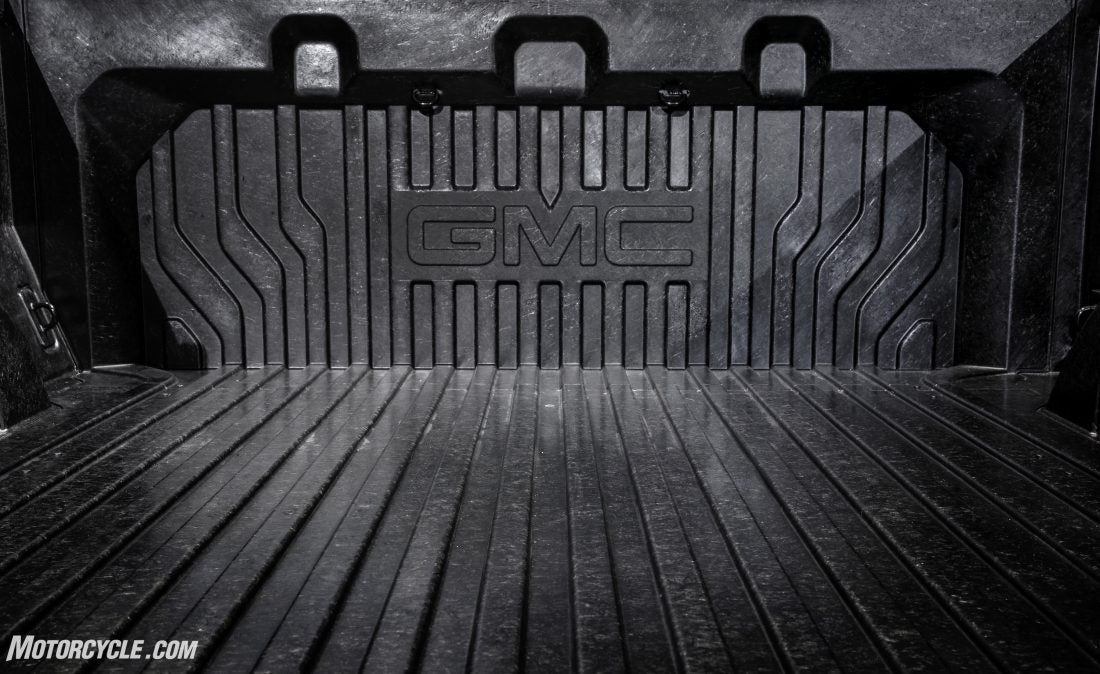
That’s not just some PR claim from GMC either. The CarbonPro truck bed’s utility for hauling bikes runs deeper than simply adding a few more tie-down points and throwing some dirtbikes in the back for marketing photos. In fact, the new truck bed’s lead designer, Carl Zipfel, has been riding motorcycles since age seven. Just a few years later Zipfel started racing, and in 1985, he began competing in the Supercross and Outdoor National series in the U.S. As we motorcyclists know, once you start riding and become a passionate enthusiast, the love of riding permeates to your core. So, it’s no surprise to see that this project of Zipfel’s incorporates a few nuances that make GMC’s CarbonPro truck bed that much better for hauling bikes than the next truck.
Not only did I have the opportunity to put the 2020 GMC Sierra Denali fitted with the CarbonPro truck bed to the test, but I also had the chance to interview the motocross racer-turned lead designer, himself. I’ll let Carl answer some questions we had about this latest development from GMC.
10 Questions with GMC’s Lead Designer Behind the CarbonPro Truck Bed
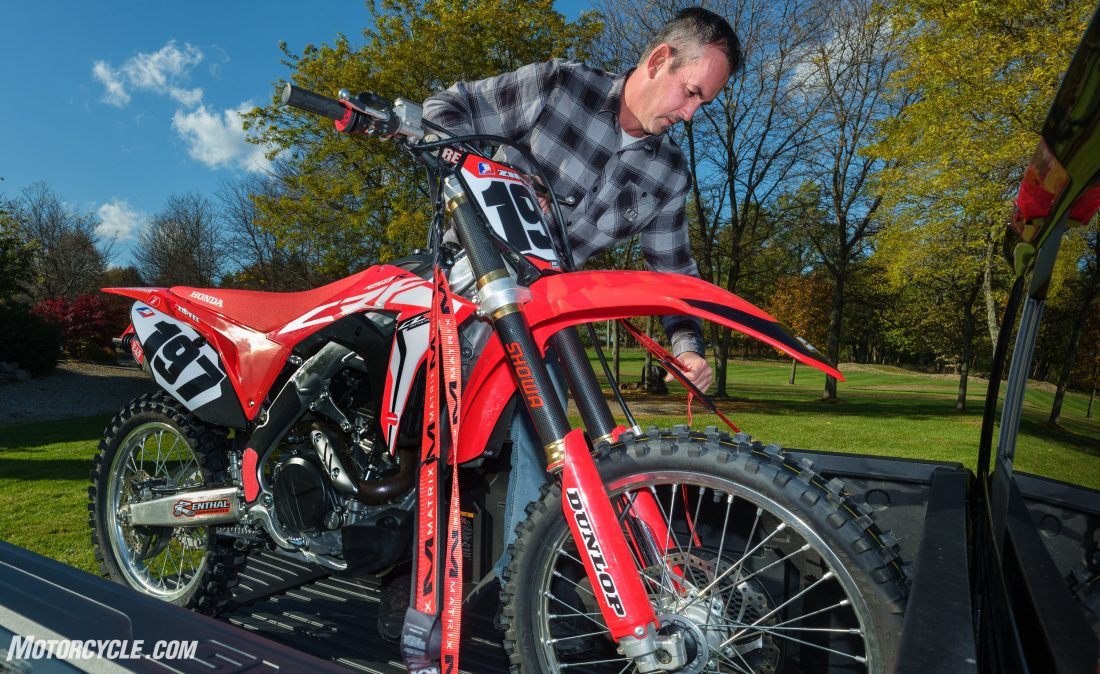
MO: Could you share with us a bit of your background as a motorcyclist turned designer?
CZ: At age 7, I got my first motorcycle for Christmas (Kawasaki Trail 75). I began racing motocross by age 10 and moved up through the amateur classes. In 1985, I started racing in the AMA pro supercross and outdoor nationals. After a few years of chasing the dream, I knew I had to find a career for which I had a similar passion as racing. After seeing a student exhibition of futuristic car and motorcycle designs, I found my way to the Cleveland Institute of Art and majored in Industrial and Transportation Design. In 1993, I graduated and immediately began working for the General Motors Design Center. I have been involved in the truck design studio for the majority of my 30-year career and have managed the GMC design team throughout the development of our new GMC Sierra.
MO: What sparked the idea behind redesigning the truck bed?
CZ: At GMC, we are always pushing for innovations that benefit our customers. While developing the all-new GMC Sierra, our leadership had an initiative to develop a lighter, stronger, innovative pickup box. We had been developing and testing our MultiPro tailgate system and decided that a great compliment to it would be our CarbonPro box for our GMC AT4 and Denali trim levels.
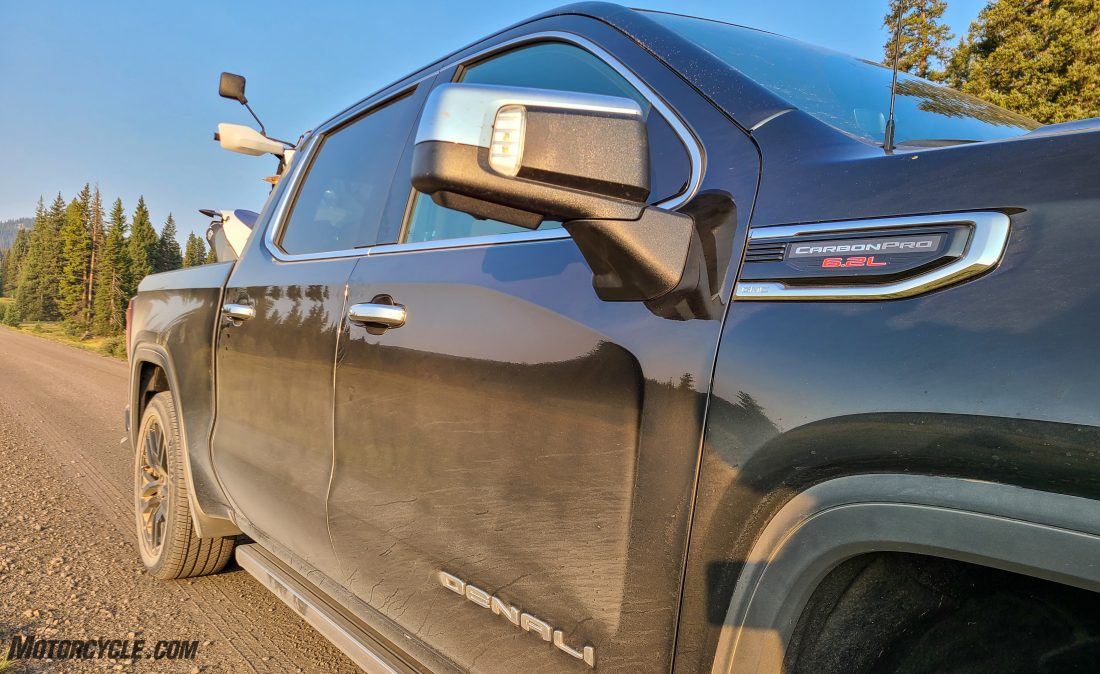
MO: Will we see any other models from GMC using the CarbonPro truck bed?
CZ: At this point, there are no plans to offer CarbonPro on our other trim levels. However, we are continuously striving to improve our products.
MO: How did you decide on the material?
CZ: The CFRP (Carbon Fiber Reinforced Polymer) was the perfect material to design a lighter and stronger pickup box. It is approximately 60 lbs. lighter than our steel box, and it’s tough. A journalist bent an aluminum baseball bat while pounding on the CarbonPro box floor at a recent event we hosted. The CFRP material also provided an added level of formability over the steel panels.
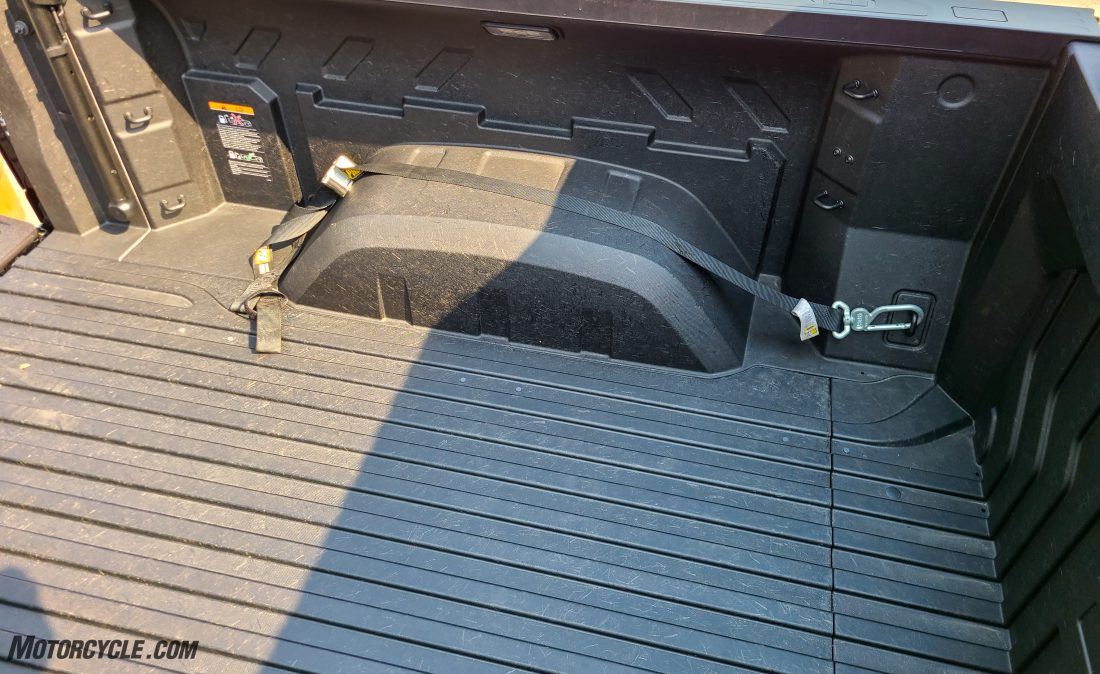
MO: Carbon fiber is generally considered an exotic material that drives up cost. How much does this drive up the cost of the CarbonPro bed versus just incorporating a similar design in an aluminum or steel bed?
CZ: The CFRP was developed as a proprietary blend with a supplier, with the goal of finding the best applications on our products and helping to drive a new competitive advantage for GMC. The CFRP provides us with improved formability, allowing us to design more efficient structure features, like the wheel chock indents in the front bulkhead that can’t be done with steel.
MO: Were there any interesting features that have been considered for truck beds that haven’t made the cut?
CZ: We are constantly conceptualizing in the design studios and have developed many innovative ideas. The development process is robust enough that a new innovative idea has to earn its way in, by being viable for mass production, quality, cost, durability, and so forth.
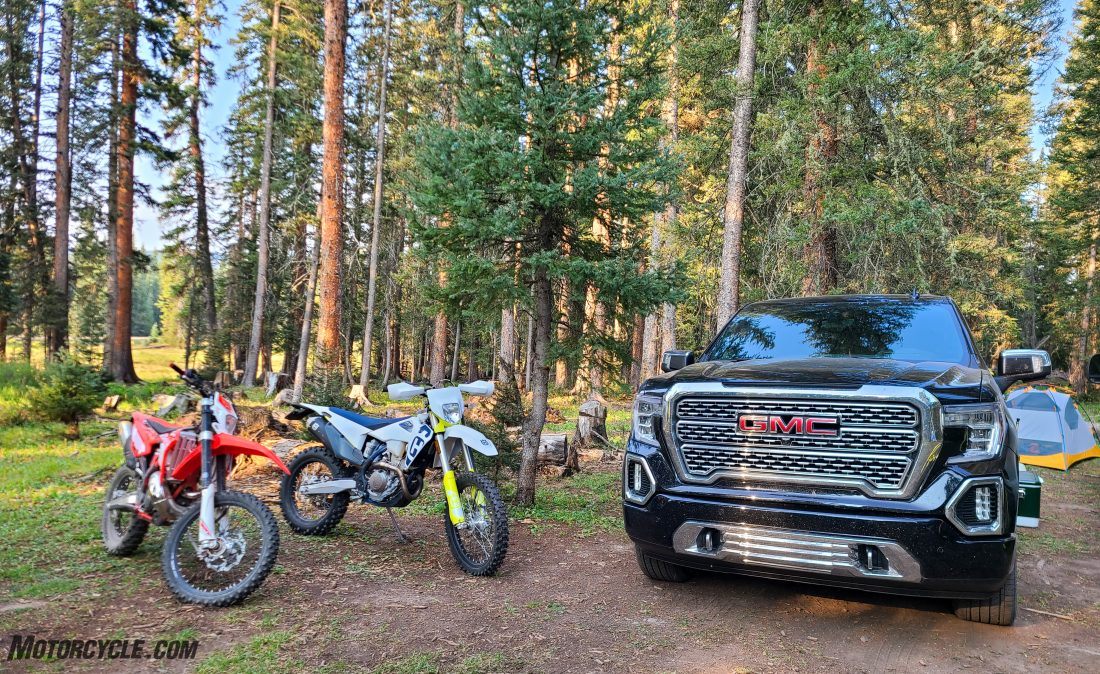
MO: Do you know how many of your customers (percentages) historically use their trucks for powersports-related activities?
CZ: We continuously receive feedback from our customers throughout the development process and learned through our research that powersports is one of the more consistent uses for a pickup. For example, we know that more than half of our Sierra customers use their trucks to primarily tow equipment for outdoor adventures, including things like hauling motorcycles, dirt bikes, ATVs, or snowmobiles.
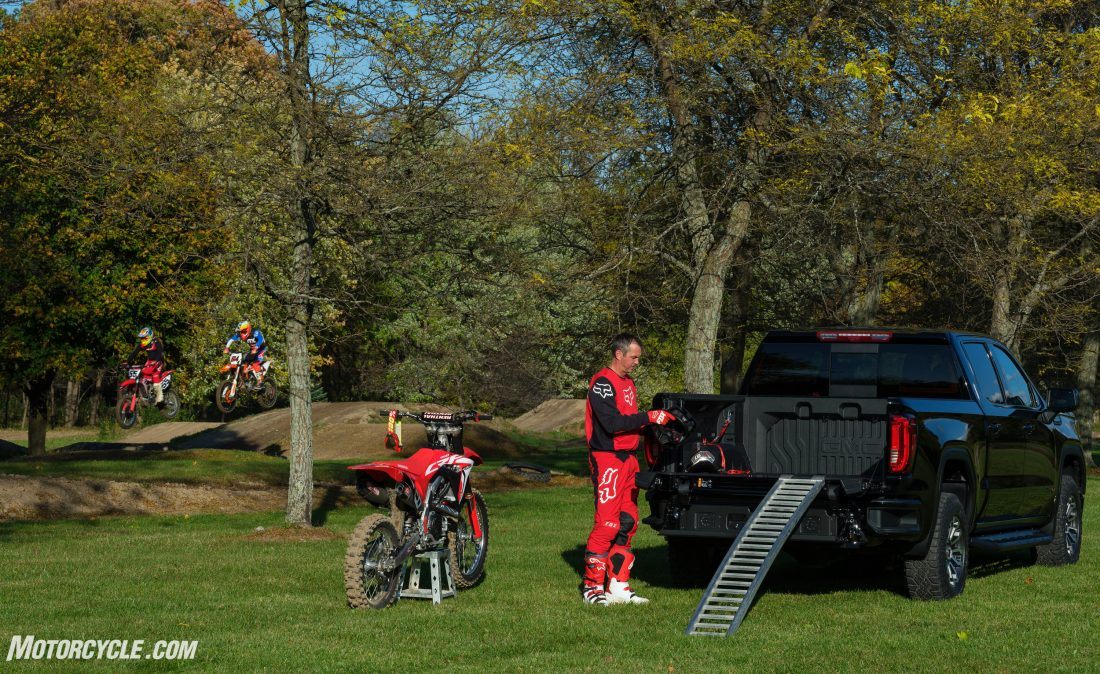
MO: What about the CarbonPro truck bed might appeal most to motorcyclists?
CZ: There are a couple of features influenced by motorcyclists that resulted from the ability to form the box differently than a steel box. After various tests, we determined that the front bulkhead needed structural vertical ribbing, and that quickly became an opportunity to design integrated wheel chock indents. We were also able to integrate additional tie down hooks on the bulkhead that are easier to reach and provide proper placement for the center tie downs if there is more than one bike. We moved the LED box lights further forward and up high into a protected position along the side panels. We have a 120V power plug at the rear of the box. When combined with the functionality of the MultiPro tailgate, loading, unloading, and securing motorcycles in the CarbonPro box becomes a much easier and safer task.
MO: How much of the design was driven by customer research versus personal interest (if any)?
CZ: We typically interact with customers on four occasions throughout the development process of an all-new truck like the GMC Sierra. During these interactions, existing truck owners have a chance to view and provide feedback on new designs and ideas. We use their feedback to help inform the development of the final designs. The CarbonPro bed offered us a unique opportunity. We could develop the box to suit a wider array of truck owner needs, with features like two-tier loading options, more tie down hooks, LED lighting, and power plug, while benefiting customers carrying powersports equipment, motorcycles or mountain bikes.
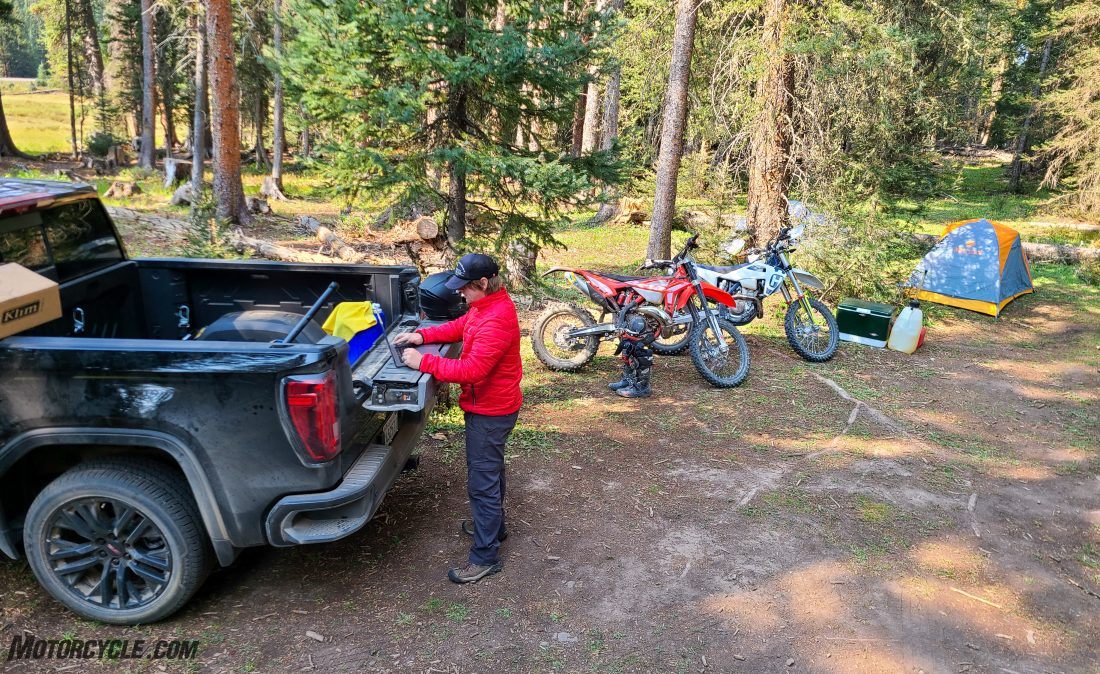
MO: What do trucks look like in the future? Not necessarily on the physical side of things, but rather what’s important to the truck user and the manufacturer moving forward?
CZ: The most important aspect is the functionality and capability of a truck, it cannot be compromised. We are always striving to improve. In the future, you will see improvements in efficiency, including better, stronger, lighter materials. Improvements in the range of the vehicle. New technologies in lighting. Trim levels that are diverse and designed for specific lifestyles and customer needs. Technologies that make traveling safer, easier, and more enjoyable. GMC will continue to create professional-grade products that are innovative, premium, and designed with our customers in mind.
In The Field
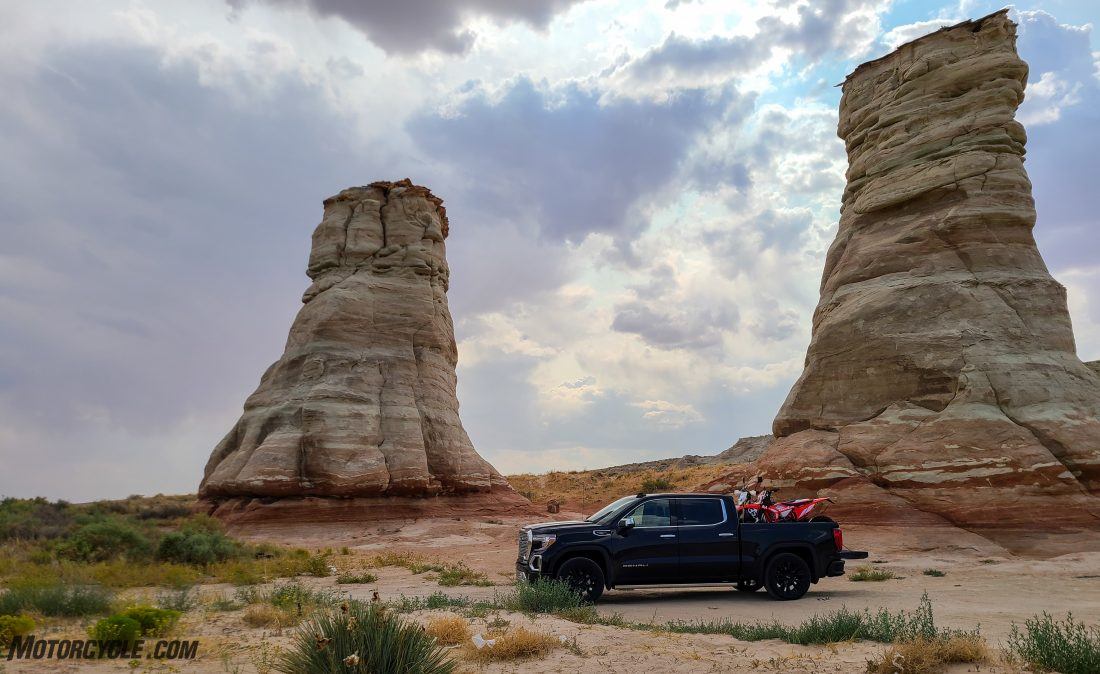
Now that we know the what and why, it was time for field testing. I pitched an idea to my editor that involved a trip to Colorado to do some alpine testing of the Husqvarna FE 350s and the Beta 300 RR among other things. One trip yielding four stories? That’s all the boss needed to hear and my request was approved.
I received both bikes just days prior to heading to CO and finished packing my camping supplies the night before (as usual). When the 3:30am alarm went off, it was one of the few times that I willingly jumped out of bed ready to hit the road. The excitement was too much.
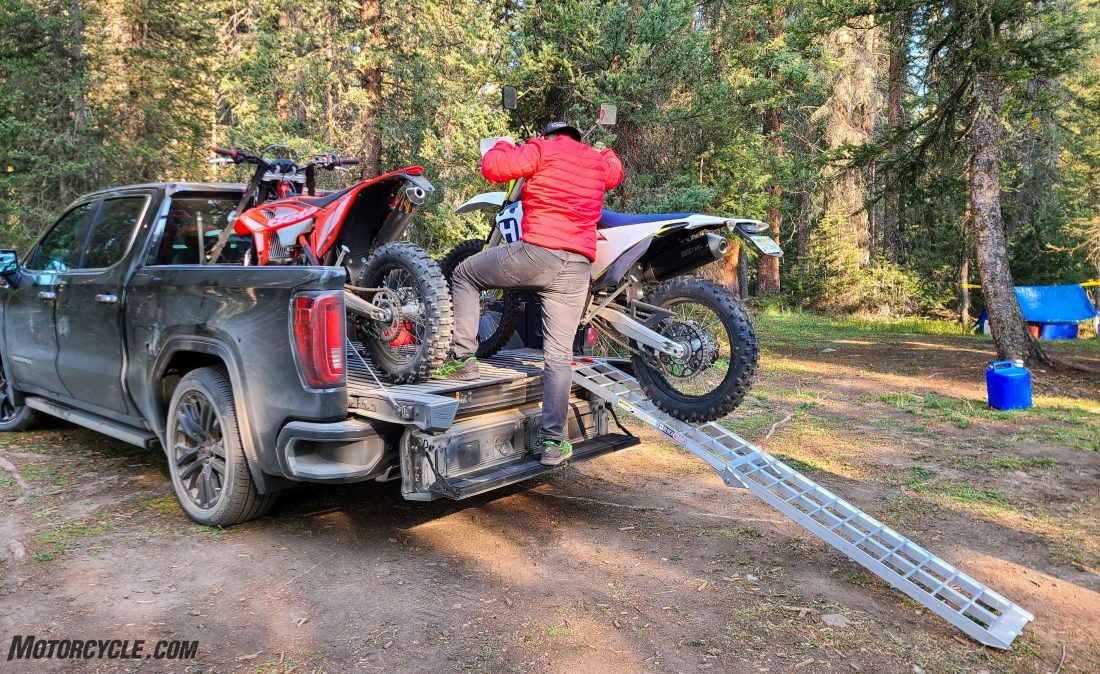
Loading the bikes into the Sierra Denali was made easy by GMC’s MultiPro tailgate. The six-way configurable tailgate – which I honestly thought was a bit gimmicky when it was first introduced – came in quite handy. No need for an extra step up into the bed, just fold the tailgate down and then fold the, er, secondary tailgate down further, and you can step up into the truck bed. There’s just one caveat, the angle isn’t perfect as the step is still pretty close to the truck. I’d be more hesitant to use it with a larger motorcycle since it compromises the leverage you have over the bike. For lighter motorcycles like dirtbikes though, it works great.
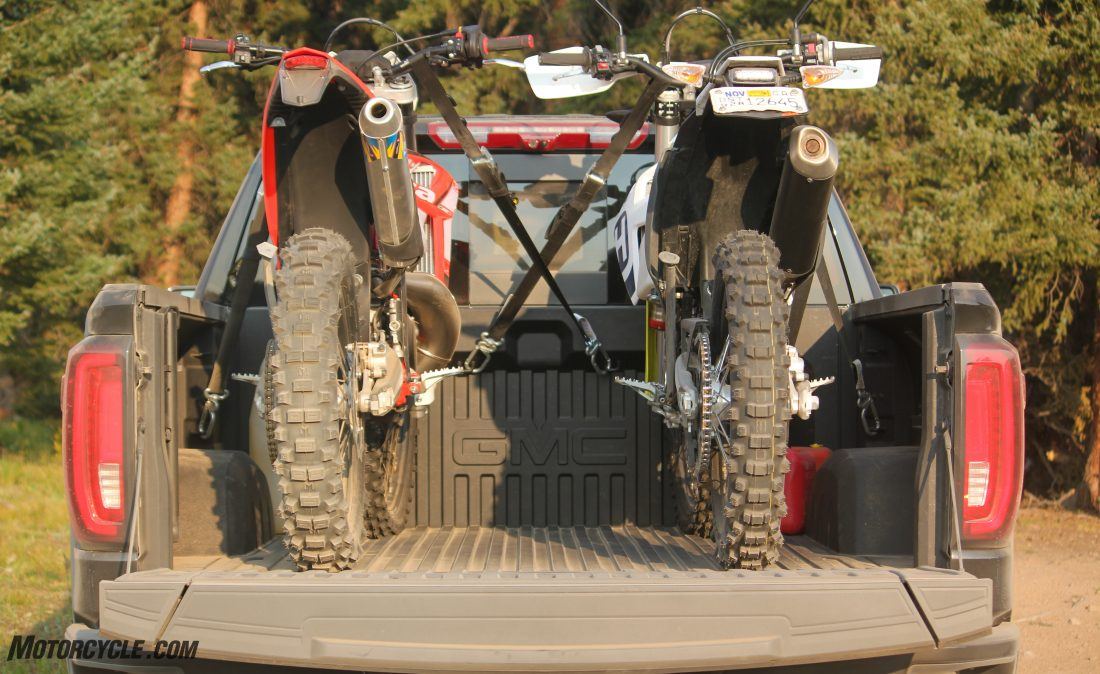
Once in the bed, the size of the CarbonPro truck bed, its ample tie-down points and integrated wheel chocks indents make securing motorcycles as easy as it always should be. Not only is there plenty of room to move around the bikes to secure tie-downs, but also the three anchor points which are strategically placed in each corner, plus the two on the bulkhead, allow for the right lashing points for any size and type of motorcycle.
The size, indents for wheels and plentiful mounting points are what make the biggest difference when hauling bikes. That said, the CFRP bed actually provides really great traction (wet or dry) compared to other composite truck beds I’ve used. If you’ve found yourself alone in the rain loading a 600-pound motorcycle into a truck sitting on a slight incline, you’ll appreciate the CarbonPro’s ample traction. When tossing gear in the back or using kickstands while loading, the CarbonPro bed also resists scratches better than any composite bed I’ve previously used.
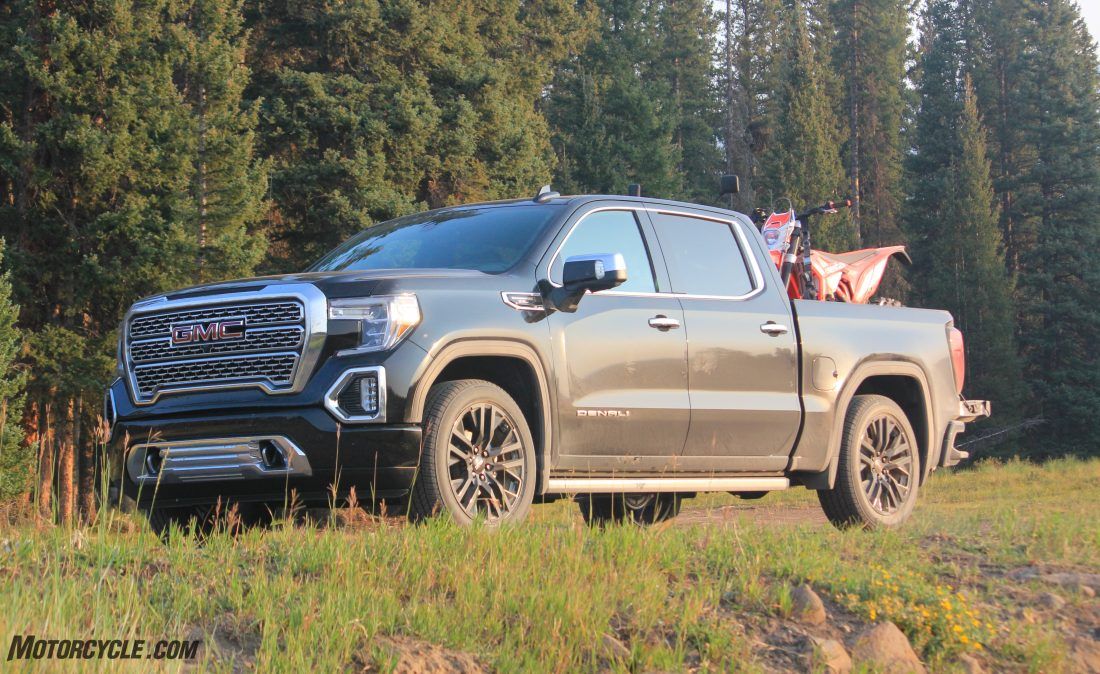
As for the truck itself, the 2020 GMC Sierra that I tested was fitted with the company’s top-o-the-line Denali trim and loaded to the gills with options. As you might imagine, it was a sweet ride. The 6.2L V-8 mated to its 10-speed automatic transmission had more than enough power to let you easily forget you were hauling 500 lbs of motorcycles and the suspension kept the truck feeling planted and level with minimal body roll. The cockpit also provides a luxurious experience full of supple dark leather and rich (real) wood accents throughout, accompanied by all the technology one would expect to find in a modern luxury four-wheel drive truck (and probably more). That’s where GMC sees itself as the only truck maker in the category. The company’s luxury truck, the Denali, is more than capable of pulling normal truck duties while looking and feeling elegant. With the AT4 – the company’s “off-road” trim package – the feeling is mutual as the AT4 brings with it most of the amenities the Denali delivers with less chrome, a more menacing appearance, and a plethora of off-road focused upgrades like a two-inch lift, skid plates, an Eaton locking rear differential, upgraded dampers, and meatier rubber.
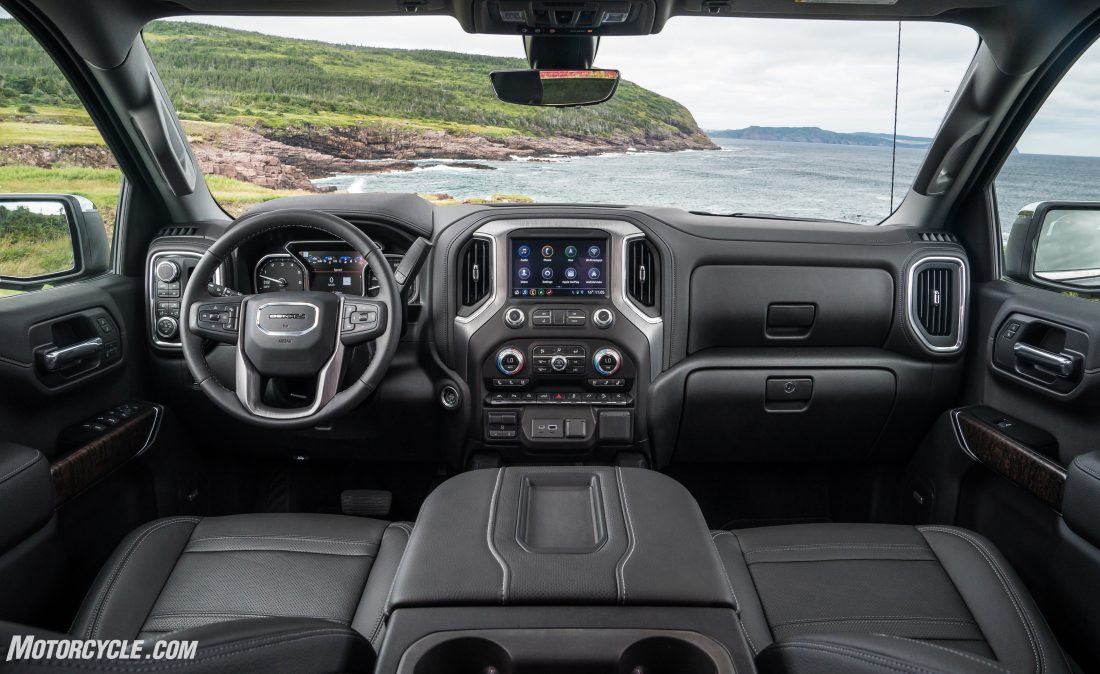
Interior space is ample for the driver and passenger as well as in the back seat. Folding the rear bench seat up provided plentiful storage inside, enough for two sets of camp gear, a decent-sized cooler, moto gear, and a ramp. I only kept the bikes and gas cans in the bed. Adaptive cruise control, the heads-up display, Bluetooth connectivity, maps, and the heated/air-conditioned seats kept me happy throughout the 1600-plus miles I spent in the truck, which was essentially in two 800-mile increments. The truck is loaded with cameras. Front, back, side to side. I’ve been stoked about the new “birds-eye” view ever since automakers started including this. With the image from all of the cameras stitched together, it makes backing up and parking quite a bit easier whether it’s maneuvering around stumps at a campsite, or trying to park the big truck in the city. Not to mention that there are what seem like dozens of ways the different cameras can be arranged at one time on the Sierra’s eight-inch display
You can go too far with the cameras though, it seems. One of the very few things I didn’t care for on the Denali I was loaned was the lack of an actual center rear-view mirror. Rather, the truck has a screen shaped like a mirror that uses one of two wide-angle cameras facing rearward near the top of the cab next to the taillight. It’s fine during the day with nothing in the bed, or even with two motorcycles loaded but, if you have one motorcycle loaded in the middle, it blocks almost the entire field of view. Furthermore, the camera does not work well at night, producing grainy, vague footage on the rear-view screen. I’d opt for the real deal instead of the screen.
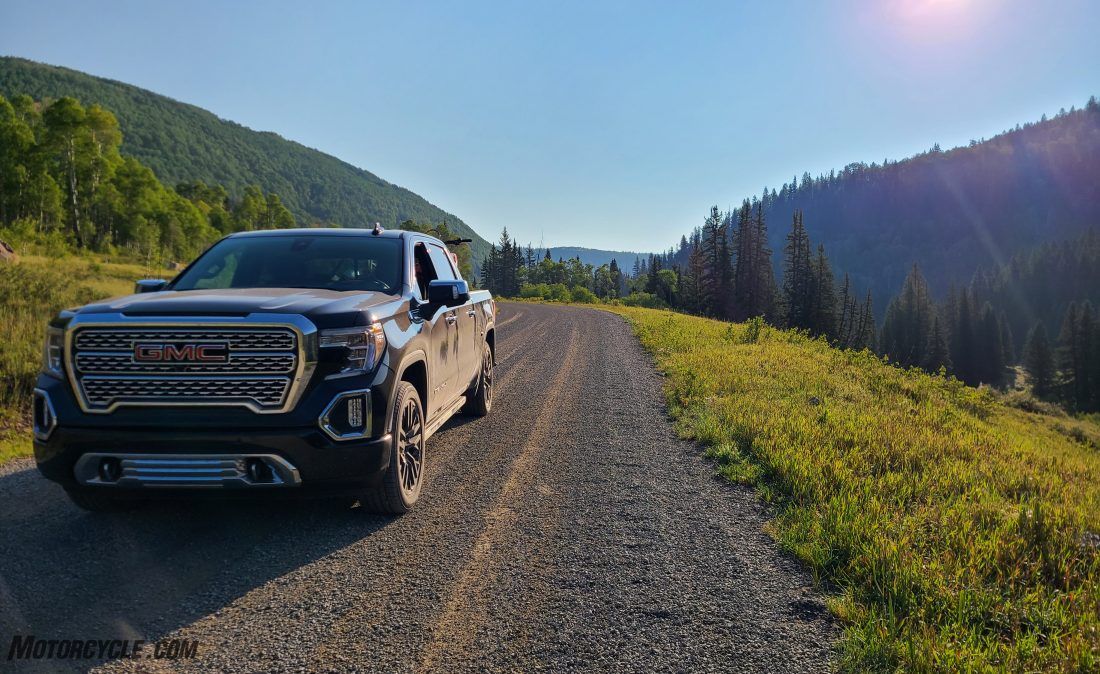
On the gravel roads out to our campsite, the truck stayed composed even over graded corners as the road snaked up into the mountains. During my time with the Sierra, I averaged 17 miles per gallon with two motorcycles in the back and a variation of highway, city, and gravel mountain roads.
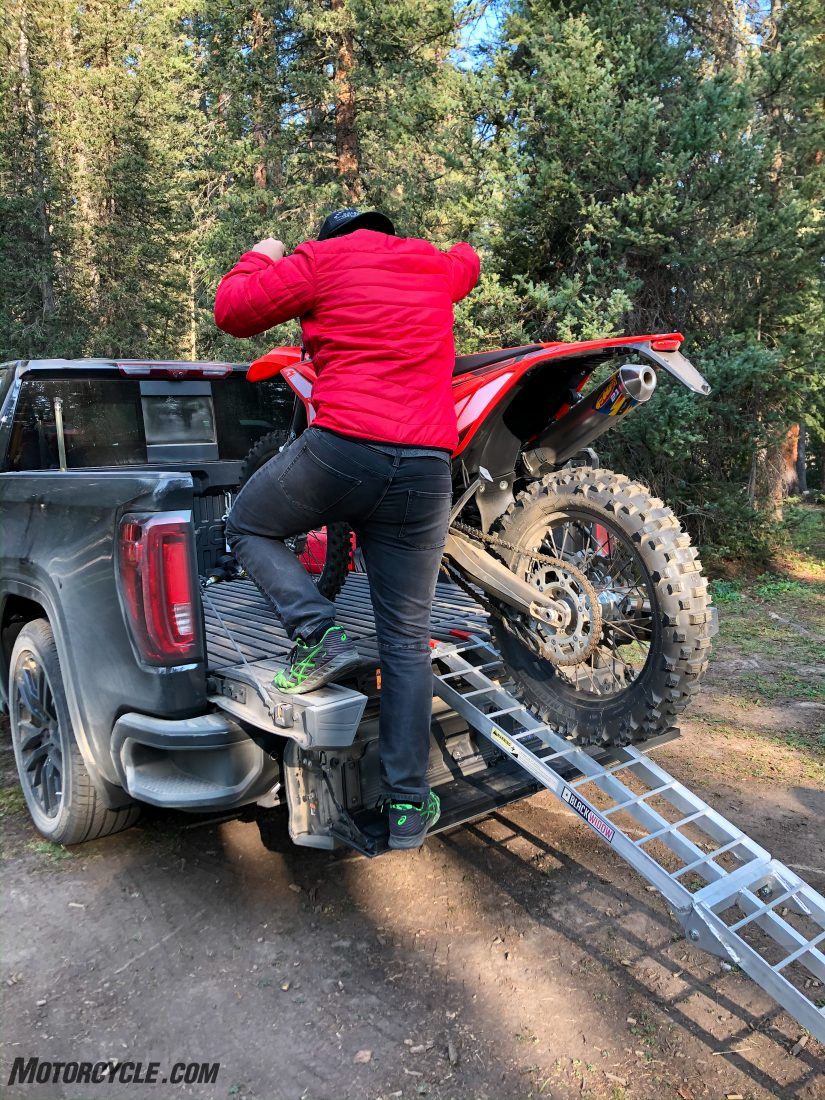
Once at camp, unloading the bikes was as easy as loading them. We could have even had tunes blasting if we wanted to since our tailgate was equipped with the Kicker audio accessory. The weatherproof system allows you to hardwire audio in, or use Bluetooth to connect your phone to play music. But I’m not the kind of guy that drives into the backcountry to blast tunes. So, it didn’t get used.
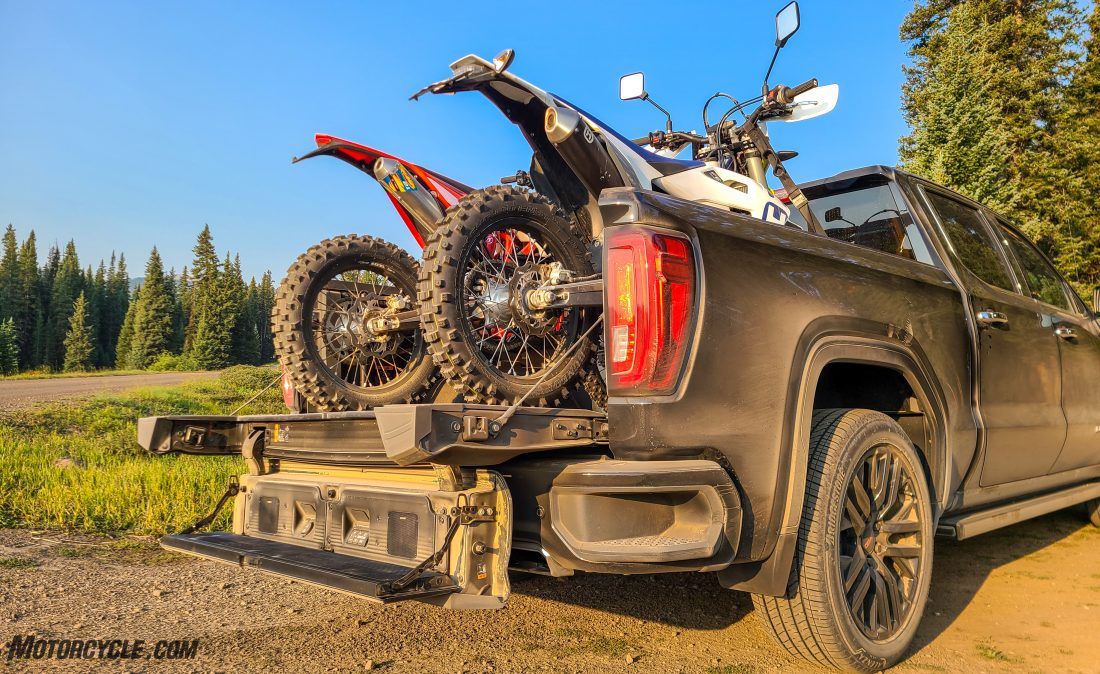
The MultiPro tailgate is particularly useful for loading and unloading dirtbikes and getting used to the step being a little closer to the truck didn’t take long. After the bikes were unloaded, I ended up keeping the inner tailgate folded down most of the time for ease of climbing into the truck bed to gear up and whatnot. There is even a handle that swings out of the side of the bed for a grab rail while stepping up onto the tailgate. I used the tailgate in the closed position with the inner section folded out as a table to give it a try. It worked nicely and if I were at a job site and needed a work surface at chest height, it’s a nice feature to have.
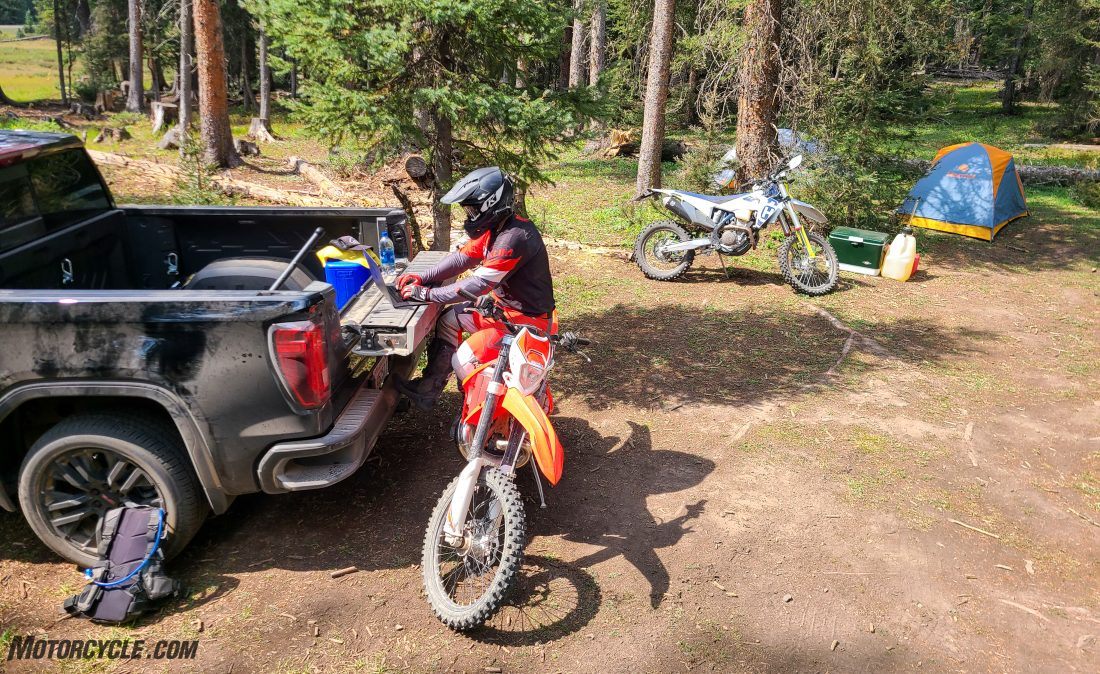
After seven days of camping and riding, it was nice to know loading the truck to head home would be easy and secure. Once packed and heading down out of the mountains, I was able to enjoy all the niceties that the Denali trim offers over the next 800 miles home. Make no mistake, you’ll be paying for that luxury and new technology, but, as always, one just has to decide if it is worth it for them. At a hair over $70,000, the truck I tested was nearly double what I paid for my own new truck, but there is definitely an argument to be made for the 2020 Sierra Denali 1500. As a guy who is constantly moving motorcycles around of all shapes and sizes, it’s pretty cool to see a manufacturer throw a bone to the folks on two wheels. If a truck can make your job even just slightly easier, while also being enjoyable during daily use, it has done its job.
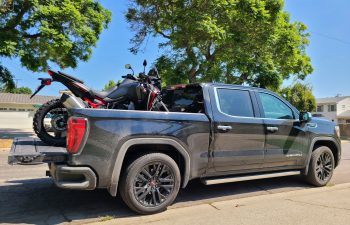
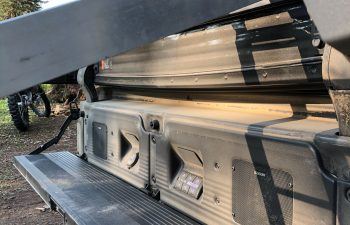
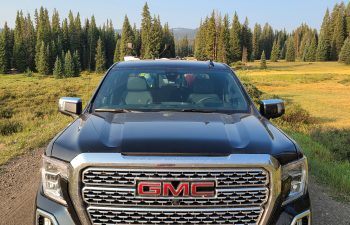
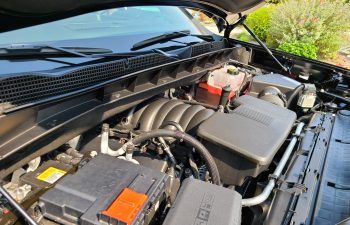
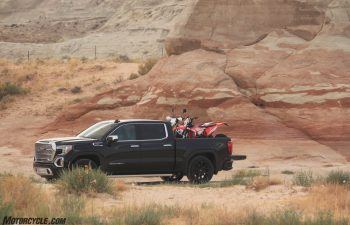
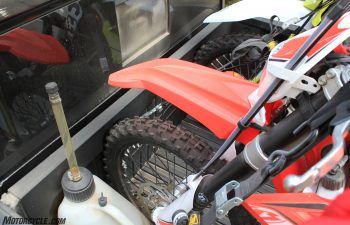
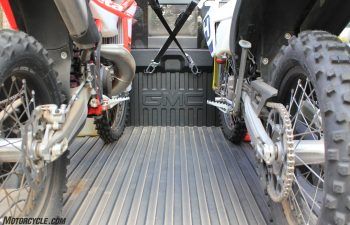
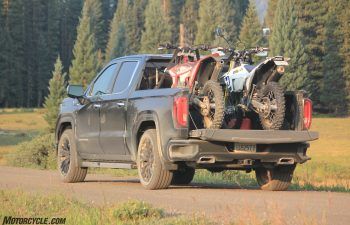
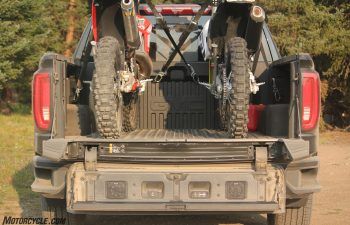
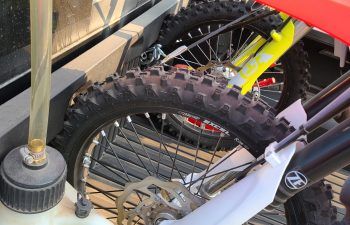
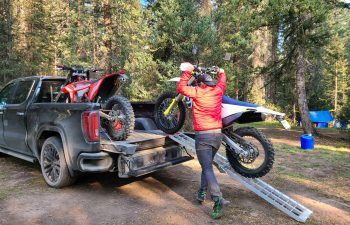
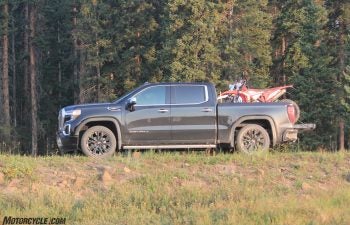
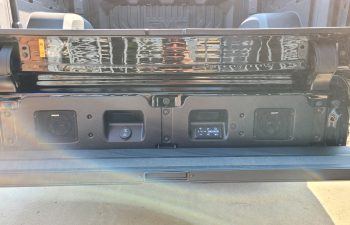
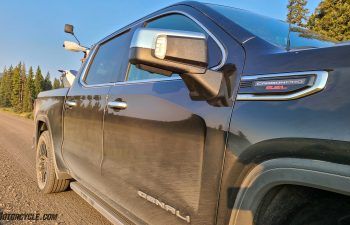
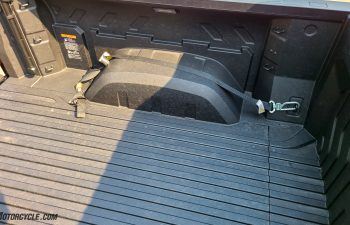
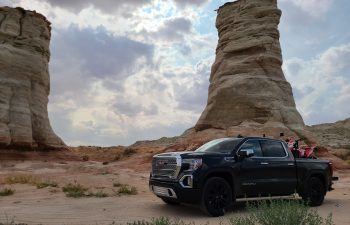
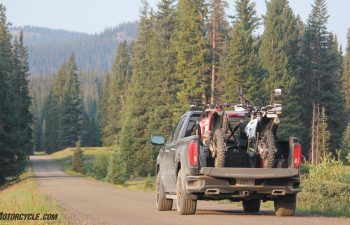
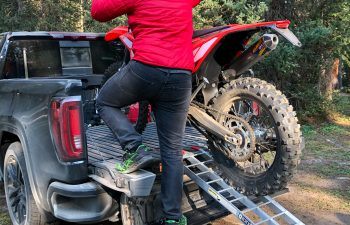
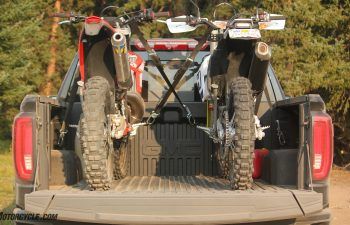
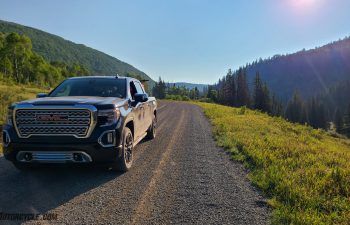
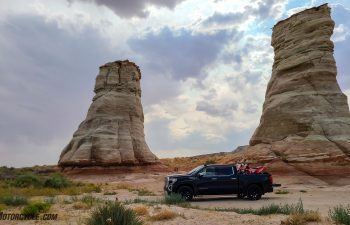
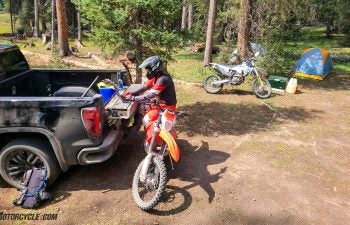
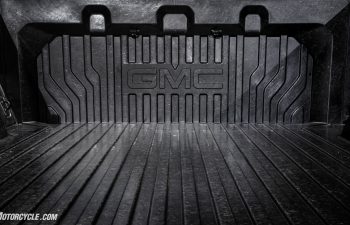
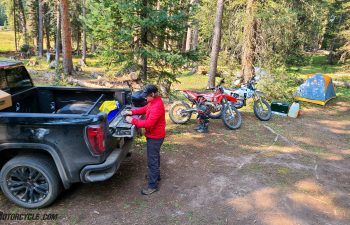
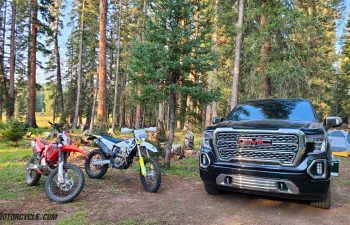
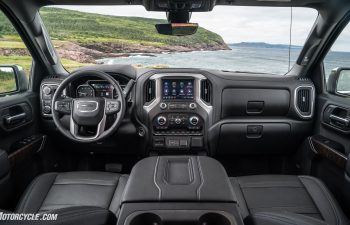
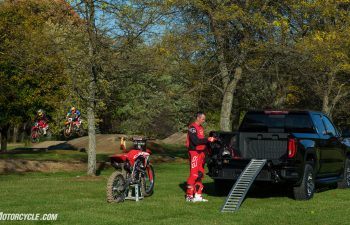
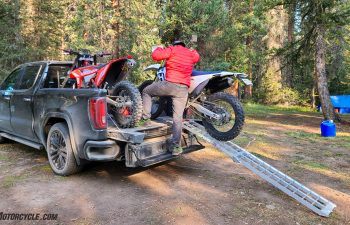
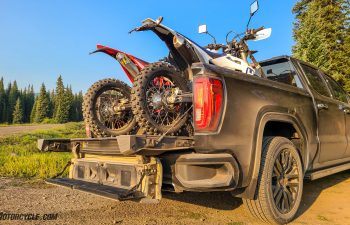
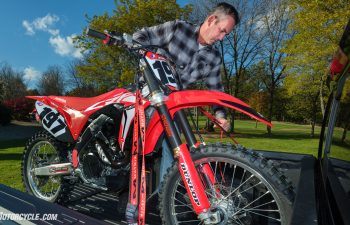
 Your Privacy Choices
Your Privacy Choices